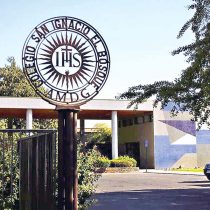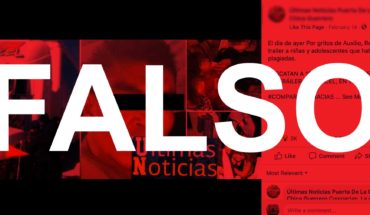
Since exploiting the case of sexual abuse of priest Fernando Karadima in 2010, the Catholic Church has undergone a process of uncovering a series of practices of pedophilia, sexual abuse, psychological violence, manipulation of conscience, etc. that to this day seem to remain just the tip of a gigantic iceberg. In this context, the Society of Jesus seemed to take a critical role in the explosion of such circumstances, trying to mark an alleged path of moral correctness to deal with these cases and generate new schemes in order to avoid their occurrence. And it is that, in the face of the first wave of fall of conservative Christian orientations, this seemed to be the last refuge for the faith: Only “the Jesuits and a few other congregations are saved,” James Hamilton said in Karadima, the Lord of Hell, a book published in 2011 by Maria Olivia Munckeberg on Karadima’s allegations and victims.
In “The Forest You Were Absolutely Subject to the Obedience of Your Spiritual Director,” they “don’t teach you how Ignatians question you, use discernment,” said Veronica Miranda, who made the first complaint against Karadima and was Hamilton’s ex-wife. José Andrés Murillo also supported the year 2010, in an article in the newspaper La Segunda on the myths and realities of the Karadima case, that “the Jesuits have only acted according to Christian charity, listening to people who, like me, have asked for help in this case”.
The image projected by the countless interviews given by Jesuit priests such as Fernando Montes, Felipe Berríos, Antonio Delfau, Juan Díaz, etc. in 2010 and 2011 was that of a congregation open to listening to victims of abuse, regardless of the consequences that this enged. In contemporary societies, however, everything that seems solid again fades into the air, as Marshall Bermann pointed out; or, using the biblical metaphor: what seemed built on the rock, is dissolved at once on the sand. Institutional models, organizational cultures and reputation: nothing and no one is saved, everything seems to fade into a society that tends to collapse socially shared assumptions.
One of them has been precisely the aforementioned assumption that the Society of Jesus would stand as an exception when it comes to the influx or treatment of situations of abuse. However, a number of cases such as those of the priests Juan Miguel Leturia, Renato Poblete, Eugenio Valenzuela, among others, who have gained strength in the middle and end of the last decade, quickly come to put the tombstone to this “Ignatian hope”. The last case from which new news is expected in the coming weeks and to which I intend to refer below is that of Jaime Guzmán Astaburuaga, a former Jesuit priest, expelled by the Vatican for crimes of sexual abuse of minors.
Recapting recent events
Priest Jaime Guzman
In a lawsuit filed on August 10, 2020 against the San Ignacio Foundation and the Society of Jesus, four alumni of the San Ignacio El Bosque school recount a series of old women suffered during their basic teaching period between 1986 and 1992 by the then priest and professor Jaime Guzmán. A report by the newspaper La Tercera that takes over this demand details how the priest used to ask them questions of a sexual nature, maintaining an eroticized language with minors; he bathed and “photographed his students naked in extra-programmatic activities,” including retreats and spiritual exercises, etc. After such events, Guzman used to publish some of these photographs in a mural journal of the school, in view and patience of teachers and authorities of the school grounds (including the rector of that time, Fernando Montes). Based on these behaviors, to which an attempted rape is added to one of the complainants, the four alumni of the San Ignacio El Bosque demanded compensation of $120 million, in turn accusing the school administration of not taking the necessary measures to prevent abuse and take care of existing ones.
The lawsuit also refers to whistleblowers’ attempts since 2009 and 2010 (in parallel with the Karadima case explosion) to move forward directly with the Jesuits. Here are mentioned meetings of alumni of the school San Ignacio El Bosque to share visions in front of the topic, as well as a communication in 2011 from the Provincial of the Society of Jesus at the time, the priest Eugenio Valenzuela, denounced in late 2010 and early 2011 for sexual and conscience abuse. In it, Valenzuela informs them that the Congregation for the Doctrine of the Faith had concluded that Jaime Guzmán was guilty of sexual abuse (with a consequent suspension of the public exercise of the ministry and the prohibition of contact with minors for 5 years), while asking whistleblowers to “reserve information” for the public impact it could have. In 2017, given the existence of a new background, the Provincial of that time, the priest Christian del Campo, informed them of an extension of the sentence to Guzman for 5 more years. In June 2019, the Society of Jesus announced Guzman’s aforementioned expulsion, which, after being subject to appeal, was confirmed by the Vatican in February this year.
With regard to the lawsuit as such, the Society of Jesus, headed by the current Provincial, the priest Gabriel Roblero, requested to reject the lawsuit, claiming the limitation of the reported facts (despite recognizing in any case that the priest Jaime Guzmán “committed various acts of sexual connotation”). For the Company” the facts reported by the plaintiffs occurred between 1989 and 1990, that is, 30 years ago and more ago, in a very different time and social and cultural context than it does seem reprehensible today, we cannot ignore.” More importantly, according to the Jesuit response text, “the entire school community was aware of the retreats that the priest Guzmán Astaburuaga made with groups of middle-school students from the school San Ignacio El Bosque al Cajon del Maipo, as well as the photographs he took during such retreats which far from being hidden were shown in a public mural diary , in a central corridor of the school, near the rectory and a teacher’s room.” “This demonstrates the lack of awareness that existed at that time in all the countries of the school community regarding certain limits related to the physical and psychic integrity of the students participating in such retreats, and who were photographed naked by the priest Guzmán Astaburuaga.” In this sense, it continues: “situations such as those reported were normalized to such an extent that even students, knowing that in such retreats the students bathed naked, were photographed by the priest Jaime Guzmán Astaburuaga and that surely at least one of those photos would be published in a mural journal of the school, agreed to attend this activity”.
Without prejudice to the foregoing, and in the context of the above complaints, the Company in turn referred to developing a standardized scale of indemnification amounts “in order to avoid making arbitrary decisions (…) [Estos] have enabled it to assess, according to the background collected in canonical investigations, each particular situation and determine in which cases it is possible and appropriate to offer economic redress and which instead has chosen to offer other paths of reparation.” “In this process, four different tranches were established depending on the severity of the cases, the subjective damage and the response that there was on the part of the Company to each complaint, among many other criteria evaluated”. Under this system, which would have taken into account experience in countries such as Ireland, Germany and Australia, the Company defined that only one of them (the first complainant) would be $15 million, recognizing the existence of the damage caused, but not the commission of such a “crime”. After the nonconformity of the complaining party and certainly due to the recent ratification of Guzman’s expulsion by the Vatican, the Company would have opened only a couple of weeks ago, according to a new report by La Tercera, to negotiate, from which a conciliation hearing was taught in order to avoid a trial. Although this was to take place last February 17, it was decided to postpone the appointment by March 18 at 10:30 a.m.
Reflections of an alumni
The succinct account of the events that occurred at the San Ignacio El Bosque school, as well as the institutional response of the Society of Jesus to the demand subscribed by the whistleblowers, compel reflection. In particular, when there has been some kind of closeness to that institution – in my case personally just as an alumni of this school – one cannot react indifferently to what has been made public in recent months. In the presentation of the “Educational Project” of the School San Ignacio El Bosque, which can be read on its website (https://www.sanignacio.cl/nuestro-colegio/proyecto-educativo-y-nocion-de-calidad), reference is made to the fundamental objective of forming “people who love and serve; people for and with others; men and women of discernment, capable of enriching and transforming the world”, thus dreaming of “a new society, in which it is possible to live fraternity”, justice and solidarity. Here it is a question of begeting “practical behaviors, realizing an ethical conscience not only well informed, but above all solidly formed”. Hence the institutional motto that every student and alumni should carry with them: “We enter to learn, we go out to serve”.
However, it is evident the insalvable distance that has been seen between the public discourse and the practical activity of the Jesuit congregation in this specific case – although representative of the Company’s response to the other allegations against Juan Miguel Leturia, Renato Poblete, Eugenio Valenzuela, among others. How can a congregation proclaiming “putting victims at the centre” claim the limitation of crimes against minors? From what perspective can the defense of the San Ignacio El Bosque school be coherent and ethical in trying to transfer responsibility for Guzman’s abuses to the same teenagers, noting that they would have agreed knowingly and rating these facts to audiences and known as “the entire school community”? What kind of moral formation can an institution that also works in the “context” offer to evade the basic responsibilities that fit it as an educational entity? Is sexual abuse justifiable in the early 1990s? What is the ethical-political example or parameter that leaves us such an institutional response?
In various accounts of the complainants of the Guzman case and so many others, there are some priests who would have known what was happening and who preferred either look to the side or rightly get more in the way of the allegations – here I refer to the names of Fernando Montes, Eugenio Valenzuela, Juan Díaz, among others. If this is effective, it is interesting to analyze the various mechanisms and circles of protection that would be deployed, facilitating special nooks and crannies for abusers, potential abusers and cover-ups. While Fernando Montes offered talks and press commentary on Karadima’s abuses and the need for forgiveness in the face of abusers in DD.HH. cases, he would have been neglecting his own responsibility and capacity for action in cases such as Guzman and others of similar connotation (read Alejandra Matus’ report on the Leturia case). In parallel, the example of Eugenio Valenzuela, who took over part of the internal process of the Guzman and Leturia case, is striking, in circumstances where he himself was denounced for abuse and, as Provincial at the time, it was his competence to channel or reject the allegations against him – as was subsequently known. For his part, Juan Díaz, who succeeded Fernando Montes as rector of San Ignacio El Bosque and continued to tolerate the publication of photos of naked students in the mural mentioned, in 1996, being Provincial of the Company, decided to send Leturia to the United States for “psychological treatment”. And so on…
About the culture of cover-up: why not “close on the outside”?
From the above, it is not difficult to see how a kind of organizational culture of tolerance – if not rightly cover-up – of abuse would have been structurally configured. The split between public discourse and institutional practice is thus evident: the Jesuits, raised as champions of moderate progressive discourse, close friends of the concertary political elite, seem to have become, inside, a sect more of religious roots, with practices not only ethically reprehensible, but even criminal. In this way, the facts end up indicating that the Jesuit congregation should not be able to be conceived as any exception to the general disapproach of the Catholic Church by the public. Moreover, the social image they have enjoyed in the past is broken more strongly by virtue of the allegations found. As James Hamilton himself has summarized in a 2019 interview with CNN: “The level of perversion of the Jesuits is even worse because they have always been listed as intellectuals.” We are therefore facing a congregation that has demonstrated that the power groups surrounding Fernando Karadima and John O’Reilly operate with the same challenged corporatist practices, among others.
The situation described confirms a diagnosis that a majority of believers seem to be clear about long ago, despite remaining in a kind of vital blockade, namely: that the Catholic Church is Practically unable to generate a structural correction compatible with the rhythm of the times. This is not the time to theedize questions of Catholic practice that are unsustainable in contemporaneity, such as the “sacrament of confession” (can anyone in their right mind understand that a child or even an adult should explain to a stranger why he should be a sinner?), the “male priesthood” (there is still no rational argument for the exclusion of women) or “celibacy” as a minimum principle of belonging. I repeat, this is not the time to go into these issues, although all this scenario raises parallel questions about the Church in today’s society: will it not be time to take a Kantian step of adulthood and close ecclesiastical institutionality “on the outside”? Isn’t it time to dare to think and discern without intermediaries touched by the divine wand of the “Holy Church”? Isn’t it time that, as adults, and in many cases parents of children in a modern world, we decide once and for all to educate the next generations on critical thinking (and even moral correctness), without the need to put educational establishments under the eaves of religious institutionality lacking any real “accountability”?
Various persons of the Church and the Jesuit congregation, or even fervent believers in “Ignatian spirituality”, will tell us that the world is full of “sinners” and the Church “is no exception”; that priests and Jesuits themselves are also human beings with virtues and flaws. However, you don’t have to know how to add 2+2 to understand the abysmal difference between individual actions and institutional behaviors. By the way, people like priest Jaime Guzmán are unfortunately several. The major problem begins, however, when such people arrive at school institutions and, after producing old age and abuse, are covert or simply sent from place to place (as John Diaz did in 96), effectively establishing a model that facilitates both the realization and cover-up of these behaviors. In doing so, it not only tends to cover up the conflict institutionally, but even to assume it as a kind of “negative” cost or externality, yes, but inevitable and even acceptable in the organizational journey. Thus, the development of a table of “prices” according to “abuse committed” by the Jesuits is offered as one more symptom of that. According to this table, the manipulation of consciousness entails a cost “X”, sexual abuse a cost “Y”, rape one “Z”, etc. Time will tell how much money the Jesuits will need in the future. While they seem to have enough coffers to maintain such logic for the time being, they may one day approach the only path of redemption that seems to be left with all this: declare broken banking and close on the outside.
The content poured into this opinion column is the sole responsibility of its author, and does not necessarily reflect the editorial line or position of El Mostrador.





